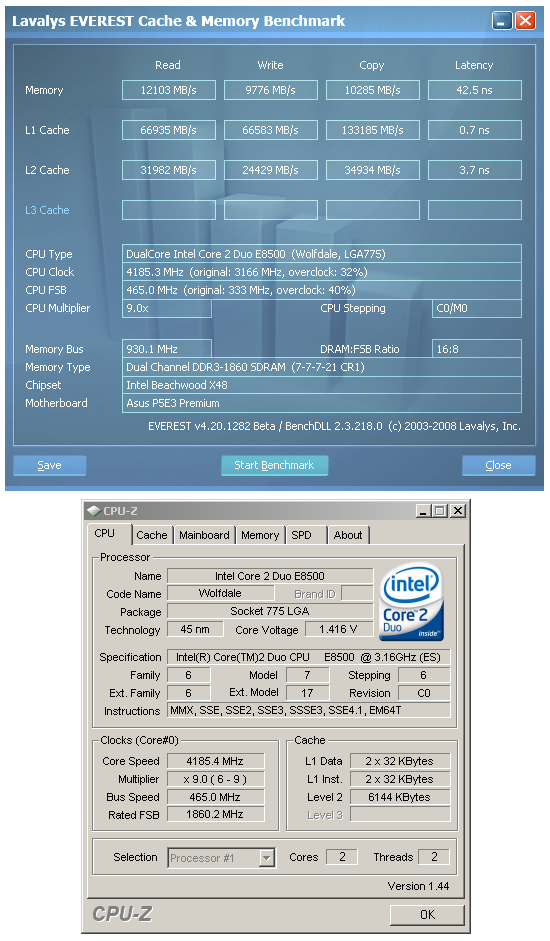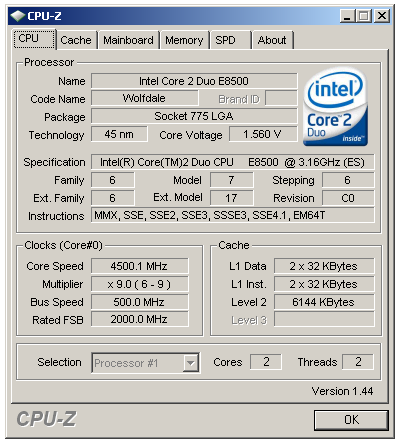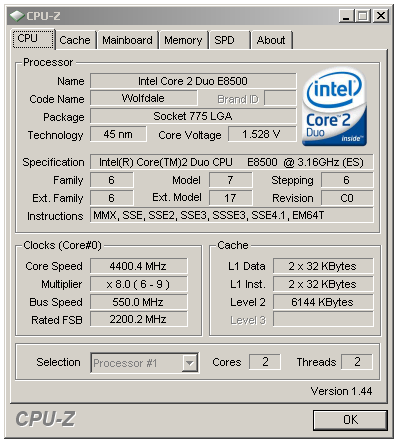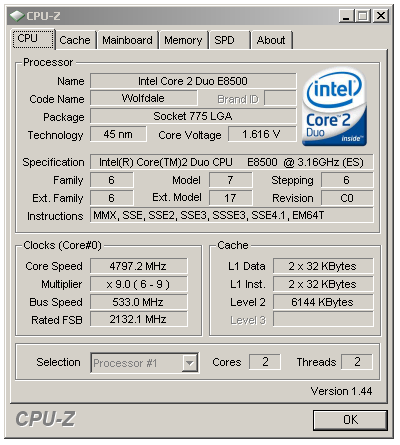ASUS P5E3 Premium: One to Rule them All…
by Kris Boughton on February 20, 2008 12:15 AM EST- Posted in
- Motherboards
Memory Overclocking

These are some of the highest memory read scores and lowest latencies we have ever seen on an Intel chipset. This is exactly where DDR3 starts to show its real power.
It's hard to argue with the performance potential this system brings at these settings, something that current X38 users might find impossible when aiming for total stability. Perhaps the most impressive point in this accomplishment is that our MCH required only 1.35V in order to run hour after hour of Prime95 or other stress tests without error. There are those that may believe this is not much to speak of, but the combination of high CPU speed and low tRD is brutal on the MCH - something we plan to explore soon in great detail. In fact, this is exactly where the X48 chipset begins to shine - in some of the situations where the X38 would either fall flat on its face or require voltages well in excess of those we feel comfortable using on a daily basis.
CPU Overclocking
 While 4.5GHz on a 45nm dual-core might not seem that impressive, we were able to get this system stable at these settings with water-cooling alone. Click to view Prime95 in action. |
The typical 45nm dual-core usually tops out around 4.0 to 4.2GHz on water-cooling or air-cooling alone, at least when it comes to achieving a truly stable overclock. Getting our E8500 sample to 4.5GHz stable took a little patience and a lot more Vcore than we feel comfortable using. Nevertheless, we ran Prime95 here for days while keeping temperatures under control (about 55C maximum in a 20C room). Most people who overclock knows just how difficult this can be.
Again, we must give a lot of credit in the success of this overclock to the power of the X48 chipset. This is also a great demonstration of ASUS' ability to design a very capable VRM circuit. Current draw under full-load at these speeds is impressive to say the least. Any other less capable power delivery design probably would have gone down in a blaze of glory (we had several in the labs that did just that trying to keep up with this board). This all just goes to show that although not specifically built for gaming per say, the P5E3 Premium is more than capable of keeping up with ASUS' very own R.O.G. line of motherboards. (Ed: Now if we could just do something about the lack of SLI….)
FSB Wars: Return of the Stupid-High Screenshot

For the general bemusement of the FSB crowd, we decided to include a screenshot of our board's maximum FSB using stock cooling and respectable voltages. While higher FSB speeds may be achievable, we can hardly imaging using them at this point. Intel's 45nm dual-core speed binning process promises to play a much more active role in the release of all future CPUs. Those that think they are going to pay for a budget chip and then turn around and overclock it to the same speeds as top-end Extreme CPUs are in for a rude awakening based on our early retail results. Keep in mind that our absolute maximum stable overclock was barely made using a multiplier less than the E8500's stock 9.5x value and you should begin to see one reason why these uber-high FSB speeds are just plain unneeded.

No quick look at overclocking performance would be complete without the obligatory maximum CPU frequency suicide-run screenshot. Just what the maximum achievable frequency was had more to do with our nerves than anything else. Given the voltage, our E8500 was more than happy to continue scaling ever higher. At some point though we said enough is enough and called it quits - that point came when we saw that we were subjecting our poor 45nm CPU to over 1.6V, simply a voltage that will require your credit card to be handy for another CPU in short time. Quite simply, we believe any voltage over 1.45V is asking for danger on the 45nm processors and conversations with Intel seem to back-up our beliefs right now. Our only solace is that we were quick when it came to gathering these results.










32 Comments
View All Comments
marsbound2024 - Wednesday, February 20, 2008 - link
That is truly the only word I can think of at the moment. While my technical knowledge is above average at best, I can say that I understood plenty enough to know that this is one amazing board. The specifications are really impressive and I was quite happy to see some of the results that you guys were able to coax out of it. I am certainly looking forward to future reviews on the chipset as well as nVidia's upcoming solution.ghd nz - Monday, January 7, 2013 - link
http://www.beats-bydrdre.ca